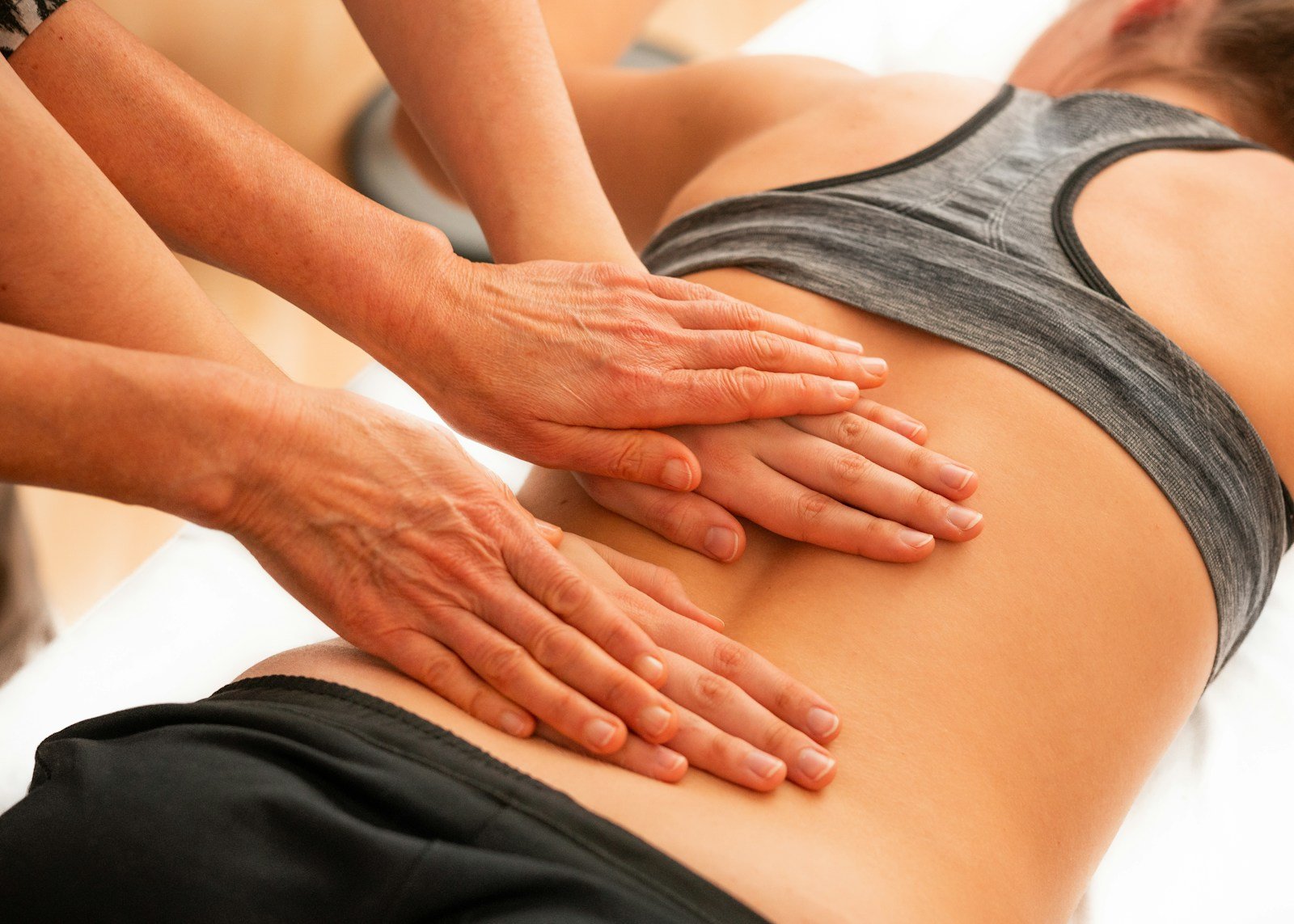Endometriosis is a painful condition that affects millions of women worldwide. It occurs when the tissue that typically lines the inside of the uterus (endometrium) grows outside the uterus, causing inflammation and discomfort. One common symptom that many people with endometriosis experience is back pain. In this article, we will explore the link between endometriosis and back pain, possible causes, treatment options, and how to manage this discomfort effectively.
What is Endometriosis?
Endometriosis occurs when endometrial tissue grows outside of the uterus. This tissue can develop on the ovaries, fallopian tubes, and the outer surface of the uterus, as well as in other parts of the body such as the intestines or bladder. Each month, this tissue responds to the hormonal changes of the menstrual cycle, thickening and breaking down just like the uterine lining. However, since this tissue has no way to exit the body, it becomes trapped, leading to irritation, inflammation, and scarring.
Common Symptoms of Endometriosis
- Pelvic pain, particularly during menstruation
- Heavy menstrual bleeding
- Pain during or after intercourse
- Fatigue
- Infertility
How Does Endometriosis Cause Back Pain?
Back pain is one of the less commonly talked about symptoms of endometriosis, but it can be very distressing for those who experience it. There are several reasons why people with endometriosis might have back pain:
1. Endometrial Tissue on the Pelvic Wall
Endometrial growths on the pelvic wall can irritate the muscles, ligaments, and nerves in the surrounding areas. When this tissue grows near the lower back or pelvis, it can lead to lower back pain, which may intensify during your period or after physical activity.
2. Inflammation
Endometriosis causes chronic inflammation in the pelvic region, which can lead to referred pain in the lower back. This happens because the nerve pathways in the pelvis and lower back are closely connected, so irritation in one area can cause pain in another.
3. Scar Tissue and Adhesions
When the body tries to heal from endometrial growths, it can create scar tissue or adhesions (bands of tissue that bind organs together). These adhesions can pull on organs or tissues in the pelvic region, leading to discomfort and back pain.
4. Ovarian Cysts
Endometriosis can also cause the formation of ovarian cysts, known as endometriomas. These cysts can grow large and cause pressure on surrounding organs, contributing to lower back pain.
5. Muscle Tension
Chronic pain in the pelvic area can cause the muscles in the lower back to tighten up in response, leading to muscle tension and pain. Over time, this can develop into chronic back pain.
Treatment Options for Endometriosis-Related Back Pain
The good news is that there are ways to manage and reduce back pain caused by endometriosis. Treatment options can vary depending on the severity of your symptoms and your overall health. Here are some of the most common approaches:
1. Pain Medications
Over-the-counter pain relievers such as ibuprofen or acetaminophen can help reduce inflammation and alleviate mild to moderate pain. For more severe pain, your doctor may prescribe stronger medications like opioids or muscle relaxants.
2. Hormonal Therapy
Since endometriosis is hormone-related, hormonal therapy can help manage the condition and reduce pain. Birth control pills, hormonal patches, or intrauterine devices (IUDs) that release hormones can help regulate your menstrual cycle and decrease the growth of endometrial tissue. Other hormonal treatments, such as GnRH agonists, can stop ovulation and reduce pain, but they may come with side effects like hot flashes and bone loss.
3. Surgery
In cases where pain is severe and doesn’t respond to other treatments, surgery may be recommended. Laparoscopic surgery is a minimally invasive procedure used to remove or destroy endometrial growths. While surgery can provide relief, it’s important to note that endometriosis can sometimes return after surgery.
4. Physical Therapy
Physical therapy can be highly effective for managing back pain related to endometriosis. A physical therapist can teach you exercises to strengthen the muscles in your back and pelvis, improve flexibility, and reduce pain. They may also use techniques like massage or trigger point therapy to relieve muscle tension.
5. Diet and Lifestyle Changes
Some people with endometriosis find that making certain lifestyle changes helps reduce their symptoms. Eating a balanced diet rich in anti-inflammatory foods (such as fruits, vegetables, and omega-3 fatty acids) may help reduce inflammation in the body. Regular exercise, yoga, and stress management techniques like mindfulness or meditation can also help relieve pain.
6. Alternative Therapies
Some people find relief from endometriosis-related back pain through alternative therapies such as acupuncture or chiropractic care. While more research is needed in these areas, some individuals report that these treatments help improve their symptoms.
Table: Treatment Options for Endometriosis-Related Back Pain
| Treatment Option | Description | Suitable For |
| Pain Medications | Over-the-counter or prescription medications to manage pain | Mild to severe pain |
| Hormonal Therapy | Birth control pills, IUDs, or GnRH agonists to regulate hormones | Hormone-related symptoms |
| Surgery | Laparoscopic surgery to remove endometrial tissue | Severe cases that do not respond to other treatments |
| Physical Therapy | Exercises and techniques to strengthen muscles and reduce tension | Back pain and muscle tension |
| Diet and Lifestyle Changes | Anti-inflammatory diet, regular exercise, and stress management | Overall symptom management |
| Alternative Therapies | Acupuncture, chiropractic care, or other alternative treatments | Those seeking non-traditional treatment options |
When to See a Doctor for Endometriosis-Related Back Pain
It’s essential to consult a healthcare provider if you suspect that endometriosis is causing your back pain. Early diagnosis and treatment can help manage your symptoms and prevent them from worsening. You should see a doctor if you experience any of the following:
- Severe pain that interferes with your daily life
- Pain that doesn’t improve with over-the-counter medications
- Pain during or after intercourse
- Unexplained fatigue or changes in your menstrual cycle
Your doctor will likely perform a physical exam, review your medical history, and may recommend imaging tests, such as an ultrasound or MRI, to assess the extent of the endometrial tissue growth.
Prevention and Managing Endometriosis Symptoms
While there is no cure for endometriosis, there are several ways to manage and reduce the symptoms, including back pain. Preventive strategies can help you control flare-ups and improve your overall quality of life. Here are some tips:
1. Regular Exercise
Exercise helps reduce inflammation and improves blood circulation, which can help manage pain. Low-impact activities such as walking, swimming, or cycling are ideal for people with endometriosis.
2. Maintain a Healthy Diet
A diet rich in anti-inflammatory foods can help reduce the symptoms of endometriosis. Focus on whole foods, including vegetables, fruits, lean proteins, and healthy fats. Avoid processed foods, sugary snacks, and foods high in trans fats, as these can worsen inflammation.
3. Stress Management
Stress can exacerbate pain, including back pain associated with endometriosis. Implementing stress management techniques can significantly help. Practices like yoga, meditation, and deep breathing exercises can promote relaxation and reduce the body’s stress response, which may help alleviate pain.
4. Adequate Sleep
Getting enough restful sleep is essential for overall health and can help your body recover from pain. Establish a consistent sleep schedule and create a restful environment by keeping your bedroom dark, cool, and quiet. Aim for 7-9 hours of quality sleep each night to support your body’s healing processes.
5. Avoid Caffeine and Alcohol
Caffeine and alcohol can sometimes worsen the symptoms of endometriosis and increase inflammation in the body. Limiting or avoiding these substances may help reduce your symptoms, including back pain.
6. Stay Informed and Advocate for Yourself
Understanding endometriosis is crucial for managing your symptoms. Educate yourself about the condition, treatment options, and ways to communicate effectively with your healthcare provider. Don’t hesitate to advocate for your health, ask questions, and seek a second opinion if needed.
7. Join Support Groups
Connecting with others who have endometriosis can provide emotional support and practical advice. Look for local or online support groups where you can share experiences, learn coping strategies, and gain insights from others who understand what you’re going through.
Conclusion
Endometriosis can lead to various symptoms, including back pain, which can be challenging to manage. Understanding the connection between endometriosis and back pain is essential for finding effective treatment strategies. While there is no one-size-fits-all solution, a combination of medical treatment, lifestyle changes, and self-care can help you manage your symptoms and improve your quality of life.
Remember that each person’s experience with endometriosis is unique. If you’re struggling with back pain or other symptoms, don’t hesitate to reach out to a healthcare professional who can help create a personalized plan to address your specific needs.
By staying informed and proactive about your health, you can take control of your endometriosis and find relief from back pain, allowing you to live a more active and fulfilling life.
Additional Resources
For more information about endometriosis, its symptoms, and treatment options, consider visiting the following reputable websites:
- Endometriosis Foundation of America
- Mayo Clinic – Endometriosis
- American College of Obstetricians and Gynecologists
These resources can provide further insight into managing endometriosis and connecting with healthcare professionals who specialize in this condition.




